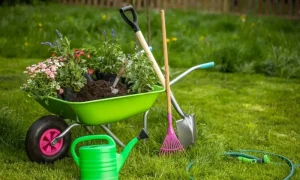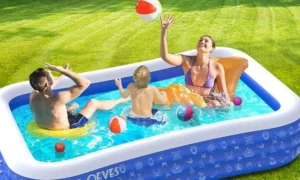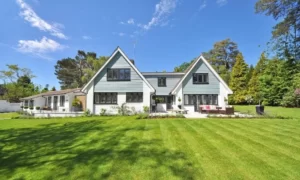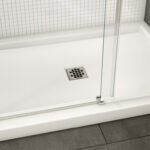Last updated on February 14th, 2024 at 11:07 pm
Every kid dreams of having a baseball field in the backyard. If you have the space and you want to turn that dream into reality, creating one isn’t too difficult. If it’s done right, it can be a safe and rewarding addition to your property.
Here are some things to consider when you plan out your backyard baseball field.
Mark It Out
The first step, of course, is to decide on the size of the field. A Major League Baseball field diamond is 90 feet in each direction from the home plate, which of course is probably not possible in a backyard. This is because it will be limited by the size of the backyard, as well as by any obstructions that might be in the way, like trees, flowerbeds, or existing play equipment.
This means that you’ll have to scale it down from full size, so make sure that there’s enough room for a bit of an outfield, and that the diamond has equal distances between each of the four plates.
Once that’s done and you’re happy with the layout, you’ll want to use a baseball field liner to mark out your field, slowly and carefully. Remember to consider where the pitcher’s mound is going to go before you complete this step.
Build the Pitcher’s Mound
The pitcher’s mound should be 10 inches high with a flat spot in the middle for the pitcher’s rubber to go. This part should prove no challenge – it’s the distance from the home plate that will be the challenge. On a full-sized field, the distance between the pitcher’s rubber and the home plate is 60 feet.
You’ll want the distance between the pitcher and the home plate to be as close to that of a full field as possible. This is because if they’re too close together, it’s going to be quite difficult for the player at bat to hit the ball, especially when it’s pitched with some speed.
Because your backyard field is going to be smaller, this will likely mean that the pitcher’s mound will be closer to third base than it might usually be on a full-sized field, but it’s a compromise that will make the field much better to play on, so one you should make.
Position the Home Plate
The next step is to decide which of the four sides of the diamond you’ll want to make the home plate. Stand on each and consider the direction the ball will not only go when hit by the player at bat but also where it might go if it’s missed by the catcher.
You don’t want either direction to be too close to anything breakable, particularly yours or your neighbor’s windows. Ideally, you should position that home plate so the ball is being pitched towards your home, and then add some protection behind where the catcher will stand.
Protect Your Home
For a backyard baseball field, this might be the most important step. At a bare minimum, you should add a catching net behind the home base. This is important because it serves two purposes. This catching net will protect your home from stray baseballs and it can also serve in the place of a catcher if there aren’t enough players. If you want to use the field solo to practice pitching, you can pitch straight into the net.
To add additional protection, consider boundary fences along the edge of the yard, built higher than any existing garden fences.
A backyard baseball field is something that can not only give the kids something to do on those warm evenings and weekends, but it can also help encourage them to get enough exercise and get them off those devices!
Final Verdict
In conclusion, a backyard baseball field can be a fun and exciting addition to any home. By following these simple tips, you can create the perfect field for your children and family. Remember to keep safety in mind at all times, and have fun!
















